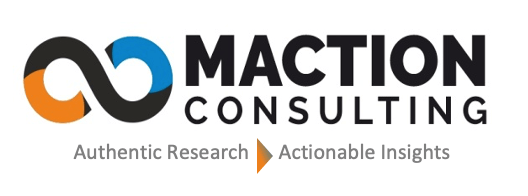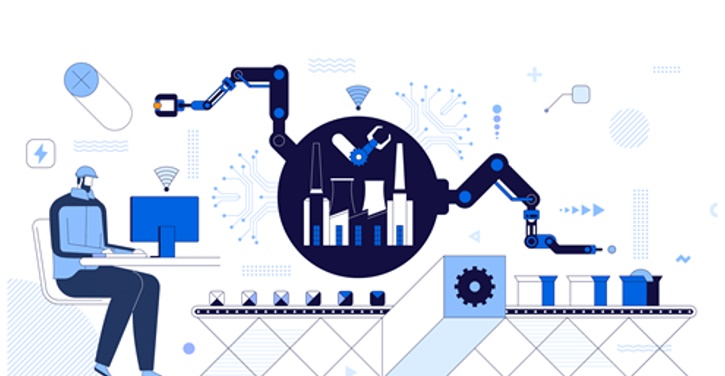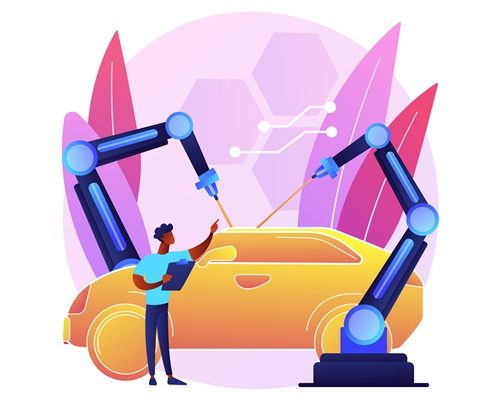Table of Contents
- Introduction
- Background on women’s empowerment in India
- Overview of the COVID-19 pandemic’s impact
- Research objectives and scope
- Literature Review
- Pre-pandemic trends in women’s empowerment
- Existing research on the impact of COVID-19 on women
- Theoretical frameworks for understanding empowerment
- Methodology
- Research design
- Findings
- Economic Empowerment:
- Social Empowerment:
- Political Empowerment:
- Case Studies
- Case Study 1: The Rise of Women-Led Microenterprises in Rural India
- Description of the initiative
- Challenges faced by women entrepreneurs
- Strategies for success and sustainability
- Impact on women’s economic empowerment
- Case Study 2: Technology-Enabled Education for Girls in Urban Slums
- Description of the program
- Addressing barriers to education for girls
- Impact on girls’ academic performance and aspirations
- Role of technology in promoting empowerment
- Case Study 1: The Rise of Women-Led Microenterprises in Rural India
- Discussion
- Key findings and insights
- Policy implications and recommendations
- Future research directions
- Conclusion
- Summary of key findings
- Limitations of the study
- Concluding remarks and future outlook
- References
Content of the Case-Study
- Introduction
-
- Background on women’s empowerment in India
Women’s empowerment in India has a complex history. While the Indian Constitution guarantees gender equality, deeply ingrained societal norms and practices often limit women’s opportunities.[1] Progress has been made in areas like education and healthcare, with increasing female literacy rates and improved maternal health outcomes.[2] However, significant challenges persist, including gender-based violence, limited economic participation, and underrepresentation in political and leadership roles.[3]
-
- Overview of the COVID-19 pandemic’s impact
The COVID-19 pandemic has disproportionately impacted women in India. Lockdowns and economic disruptions led to significant job losses, particularly in sectors where women are heavily concentrated, such as the informal sector and care work. Increased domestic burdens, including childcare and elder care, further limited women’s economic participation and exacerbated existing inequalities. The pandemic also saw a surge in domestic violence, highlighting the vulnerabilities women face within their homes.
-
- Research objectives and scope
This research aims to investigate the impact of the COVID-19 pandemic on women’s empowerment in India. Specifically, it explores the following:
- Assess the extent of economic, social, and political impacts of the pandemic on women’s lives.
- Examine the effectiveness of government policies and interventions in mitigating the negative impacts on women.
- Identify emerging opportunities and challenges for women’s empowerment in the post-pandemic era.
- Develop evidence-based recommendations for policymakers and practitioners to promote women’s empowerment in India.
The scope of this research encompass various sectors, including education, healthcare, employment, and political participation, focusing on the experiences of women from diverse backgrounds and regions across India.
2. Literature Review
-
- Pre-pandemic trends in women’s empowerment
Before the pandemic, women’s empowerment in India was showing signs of progress. Increased access to education, particularly for girls, was leading to improved economic opportunities and social mobility. Women were increasingly entering the workforce, though often concentrated in low-paying and informal sectors.
-
- Existing research on the impact of COVID-19 on women
Existing research on the impact of COVID-19 on women highlights a range of concerns. Studies have documented significant job losses and income insecurity among women, particularly in sectors like tourism, hospitality, and retail. Increased domestic responsibilities, including childcare and elder care, have disproportionately burdened women, limiting their economic participation and exacerbating existing gender inequalities. Research also points to a rise in domestic violence and mental health challenges among women during the pandemic.
-
- Theoretical frameworks for understanding empowerment
Theoretical frameworks for understanding empowerment provide a lens through which to analyze the complex processes involved. Some key frameworks include:
- Capability Approach: Developed by Amartya Sen, this framework emphasizes individuals’ capabilities to achieve their desired well-being. It focuses on expanding women’s choices and freedoms.[4]
- Agency Framework: This perspective highlights women’s ability to act independently and make choices that shape their lives. It emphasizes women’s voice, decision-making power, and control over resources.
- Social-Ecological Model: This framework views empowerment as a multi-level process influenced by individual, interpersonal, organizational, community, and societal factors. It emphasizes the interconnectedness of different levels of influence.[5]
3. Methodology
- Qualitative Research Design
This approach would involve in-depth exploration of women’s experiences and perspectives.
- Methods: In-depth interviews with women from diverse backgrounds, focus group discussions, and participant observation could be employed.[6]
- Data Analysis: Techniques such as thematic analysis would be used to identify key themes and patterns in the data.[7]
- Strengths: Provides rich, nuanced insights into women’s lived experiences and empowers them to share their own voices.
- Limitations: May not be easily generalizable to larger populations and can be time-consuming.[8]
- Quantitative Research Design
This approach would focus on collecting and analyzing numerical data to identify trends and patterns in women’s empowerment. [9]
- Methods: Surveys, statistical analysis of existing data (e.g., government datasets), and quantitative content analysis could be used.
- Data Analysis: Statistical methods would be used to analyze the data.
- Strengths: Allows for large-scale data collection and provides statistically significant results that can be generalized to larger populations.[10]
- Limitations: May not capture the complexity and nuances of women’s experiences and may overlook individual perspectives.
- Mixed Methods Research Design
This approach combines both qualitative and quantitative methods to gain a more comprehensive understanding of the research topic.[11]
- Methods: Could involve conducting surveys to gather quantitative data on women’s employment status, followed by in-depth interviews with a subset of survey respondents to explore their experiences in more detail.
- Data Analysis: Both quantitative and qualitative data analysis techniques would be used.
- Strengths: Provides a more holistic understanding of the research topic by combining the strengths of both qualitative and quantitative approaches.[12]
- Limitations: Can be more complex and time-consuming to design and implement compared to single-method approaches.[13]
-
- Data collection methods (e.g., surveys, interviews, focus groups)
- Surveys
- Description: Surveys involve administering a set of standardized questions to a sample of respondents. They can be conducted online, through phone calls, or in person.
- Strengths: Allow for efficient data collection from a large number of respondents, enabling quantitative analysis of trends and patterns.
- Limitations: Can be limited in capturing the depth and nuances of individual experiences. May suffer from response bias and social desirability bias.
- Interviews
- Description: Involve in-depth conversations with individuals to gather detailed information about their experiences, perspectives, and beliefs. Can be conducted face-to-face, over the phone, or through video conferencing.
- Strengths: Allow for in-depth exploration of individual experiences and perspectives. Provide rich, qualitative data that can reveal insights not captured by surveys.
- Limitations: Can be time-consuming and resource-intensive. May be subject to researcher bias.
- Focus Groups
- Description: Involve moderated discussions with small groups of individuals to explore a particular topic in depth.
- Strengths: Provide a platform for group interaction and the emergence of collective insights. Can be particularly useful for exploring sensitive or complex issues.
- Limitations: May be dominated by a few vocal participants. Group dynamics can sometimes inhibit open and honest discussion.
4. Findings
-
- Economic Empowerment:
The COVID-19 pandemic had a devastating impact on women’s economic empowerment in India.[24] Lockdowns and economic disruptions led to significant job losses, particularly in sectors where women are heavily concentrated, such as the informal sector, agriculture, and domestic work. This resulted in increased income insecurity and financial hardship for many women.
Furthermore, the pandemic exacerbated existing gender inequalities by increasing women’s domestic workload. With schools and childcare centers closed, women bore the brunt of childcare and elder care responsibilities, limiting their ability to participate in the workforce and pursue economic opportunities.
Access to financial resources and credit also became more challenging for women during the pandemic. Many women-owned businesses faced difficulties accessing loans and other forms of financial support, hindering their ability to recover from economic losses and rebuild their livelihoods
-
- Social Empowerment:
The COVID-19 pandemic significantly impacted various aspects of women’s social empowerment in India.[24] School closures and disruptions to education systems led to increased dropout rates, particularly for girls, hindering their access to quality education and skill development opportunities. This has long-term consequences for their future economic and social mobility.
Furthermore, the pandemic disrupted access to healthcare services for women, including maternal and reproductive healthcare.[14] This resulted in increased maternal and infant mortality rates and limited access to essential healthcare services.
Perhaps most alarmingly, the pandemic saw a surge in domestic violence and gender-based violence against women. Lockdowns and increased confinement within homes exacerbated existing power imbalances and created an environment conducive to abuse. Reports of domestic violence, including physical, emotional, and sexual abuse, increased significantly during this period.
However, the pandemic also highlighted the importance of social support networks and community engagement. Women’s self-help groups and community-based organizations played a crucial role in providing support, resources, and a sense of community during the crisis. These networks helped women cope with the challenges of the pandemic, access essential services, and build resilience.[15]
These findings underscore the multifaceted and complex impact of the COVID-19 pandemic on women’s social empowerment in India. Addressing these challenges requires a multi-pronged approach that includes strengthening education systems, improving access to healthcare, addressing gender-based violence, and supporting community-based initiatives that empower women.
-
- Political Empowerment:
The COVID-19 pandemic presented significant challenges to women’s political empowerment in India. While India has made strides in increasing women’s representation in decision-making bodies, particularly at the local level, the pandemic may have hindered these gains. Disruptions to political processes, including elections and public consultations, may have limited women’s opportunities for political participation and advocacy.
Furthermore, the increased burden of domestic responsibilities during the pandemic may have disproportionately impacted women’s ability to engage in political activities. This could have led to decreased political participation, limited access to political information, and reduced representation of women’s voices in policy-making processes.
However, the pandemic also presented opportunities for women’s political leadership and advocacy. Women leaders at various levels played a crucial role in responding to the pandemic, demonstrating their leadership skills and effectiveness in crisis management. Women’s rights organizations and advocacy groups also played a vital role in raising awareness about the gendered impacts of the pandemic and advocating for policies that address the specific needs of women.
5. Case Studies
-
- Case Study 1: The Rise of Women-Led Microenterprises in Rural India
Description of the Initiative:
The COVID-19 pandemic disrupted livelihoods across India, particularly for women in rural areas. To mitigate this impact, several initiatives emerged to support women-led microenterprises. These included[27]:
- Skill Development Programs: Training programs focused on various skills like tailoring, embroidery, food processing, and handicrafts were organized by NGOs, government agencies, and self-help groups.
- Microfinance and Credit Facilities: Access to micro-credit and loans was facilitated through self-help groups, microfinance institutions, and government schemes. This provided crucial financial support for women to start or expand their businesses.[16]
- Market Linkage Initiatives: Efforts were made to connect women entrepreneurs with markets through platforms like e-commerce, exhibitions, and partnerships with local retailers.
Challenges Faced by Women Entrepreneurs:
- Limited Access to Resources: Women entrepreneurs often face challenges in accessing resources such as finance, technology, and raw materials.
- Social and Cultural Barriers: Traditional gender roles and societal norms can limit women’s economic participation and entrepreneurship.
- Lack of Access to Information: Women may lack access to information on market trends, business management, and financial literacy.[17]
- Competition: Competition from larger businesses and the informal sector can pose a significant challenge to women-led microenterprises.
Strategies for Success and Sustainability:
- Skill Development and Training: Continuous skill development and training programs are crucial to enhance women’s entrepreneurial skills and adapt to changing market demands.
- Access to Finance and Credit: Expanding access to affordable credit and financial services through microfinance institutions and government schemes is essential.
- Market Linkage and Access: Connecting women entrepreneurs with markets through e-commerce platforms, exhibitions, and partnerships with retailers can help them expand their reach and increase their income.[18]
- Social and Community Support: Fostering supportive networks through self-help groups, women’s collectives, and community-based organizations can provide emotional and social support to women entrepreneurs.
- Policy Support: Government policies should be designed to create an enabling environment for women entrepreneurs, including tax incentives, access to technology, and protection of intellectual property rights.
Impact on Women’s Economic Empowerment:
The rise of women-led microenterprises has had a significant impact on women’s economic empowerment in rural India. It has[19]:
- Generated Income and Improved Livelihoods: Provided women with a source of income and improved their economic security.
- Increased Financial Independence: Empowered women to make their own economic decisions and become financially independent.
- Enhanced Social Status: Increased women’s social status and decision-making power within their households and communities.
- Created Employment Opportunities: Generated employment opportunities for other women in the community, contributing to local economic development.[19]
-
- Case Study 2: Technology-Enabled Education for Girls in Urban Slums
Description of the Program:
This initiative aims to bridge the digital divide and improve educational outcomes for girls living in urban slums. Key components often include:
- Digital Literacy Training: Providing basic digital literacy skills, including internet safety, online research, and using educational software.
- Access to Technology: Distributing low-cost tablets or smartphones, setting up community-based digital learning centers, or providing access to free Wi-Fi.
- Digital Learning Resources: Developing and providing access to age-appropriate educational content, such as online learning platforms, interactive educational games, and digital libraries.
- Mentorship and Support: Providing mentorship and support from teachers, volunteers, and older girls to guide and encourage girls in their learning journey.
Addressing Barriers to Education for Girls:
- Overcoming Financial Constraints: Providing affordable or free access to technology and internet connectivity.
- Addressing Gender Bias: Promoting gender-equitable learning environments and challenging societal norms that limit girls’ access to education.
- Improving Digital Literacy: Equipping girls with the necessary digital skills to navigate the online world and access educational resources effectively.
- Addressing Safety Concerns: Ensuring the safety and security of girls online through digital literacy training, parental guidance, and robust online safety measures.
Impact on Girls’ Academic Performance and Aspirations:
- Improved Academic Performance: Increased access to quality education and personalized learning experiences can significantly improve girls’ academic performance and grades.
- Enhanced Learning Outcomes: Technology-enabled learning can make learning more engaging and interactive, leading to better understanding and retention of concepts.
- Increased Confidence and Self-Esteem: Success in digital learning can boost girls’ confidence and self-esteem, encouraging them to pursue higher education and career goals.
- Expanded Career Aspirations: Exposure to diverse information and career options through technology can broaden girls’ horizons and inspire them to pursue ambitious career goals.
Role of Technology in Promoting Empowerment:
- Breaking Down Barriers: Technology can break down geographical and socioeconomic barriers to education, providing access to quality learning resources regardless of location or background.[20]
- Personalized Learning: Technology can enable personalized learning experiences, allowing girls to learn at their own pace and focus on their individual needs and learning styles.[21]
- Developing Essential Skills: Digital literacy skills are increasingly important in today’s world. By developing these skills, girls are better equipped to succeed in the 21st-century job market.[22]
- Empowering Voice and Agency: Technology can provide girls with a platform to express their views, share their stories, and advocate for their rights.[23]
6. Discussion
Key Findings and Insights
- Disproportionate Impact: The COVID-19 pandemic had a disproportionately negative impact on women’s empowerment across economic, social, and political spheres.[24]
- Economic Hardship: Job losses, increased domestic burdens, and limited access to resources exacerbated women’s economic vulnerabilities.[25]
- Social Setbacks: Disruptions to education, healthcare, and increased domestic violence significantly impacted women’s social well-being.[26]
- Political Challenges: The pandemic may have hindered women’s political participation and limited their representation in decision-making processes.
- Resilience and Adaptation: Despite the challenges, women demonstrated resilience and adaptability, with many venturing into entrepreneurship and utilizing social support networks to cope with the crisis.
Policy Implications and Recommendations
- Economic Empowerment:
- Job Creation: Implement targeted job creation programs for women in sectors with high female employment.
- Skill Development: Invest in skill development programs that equip women with in-demand skills for the changing job market.
- Access to Finance: Expand access to credit and financial resources for women entrepreneurs through microfinance institutions and government schemes.
- Childcare Support: Provide affordable and accessible childcare options to enable women to participate in the workforce.
- Social Empowerment:
- Education: Ensure equitable access to quality education for girls, including digital literacy and online learning opportunities.
- Healthcare: Improve access to quality healthcare services for women, including maternal and reproductive healthcare.
- Gender-Based Violence: Strengthen legal frameworks and implement effective programs to prevent and address domestic violence and gender-based violence.
- Social Support: Support community-based initiatives and women’s self-help groups that provide social support and resources to women.
- Political Empowerment:
- Political Participation: Promote women’s political participation through voter education, leadership training, and quota systems for women’s representation in decision-making bodies.
- Gender-Responsive Governance: Ensure that gender considerations are mainstreamed into all government policies and programs.
Future Research Directions
- Long-term Impacts: Conduct longitudinal studies to assess the long-term impacts of the pandemic on women’s empowerment.
- Regional Variations: Investigate the differential impacts of the pandemic on women across different regions and socioeconomic groups in India.
- Role of Technology: Explore the role of technology in mitigating the negative impacts of the pandemic on women and promoting their empowerment.
- Effectiveness of Interventions: Evaluate the effectiveness of government interventions and community-based initiatives in addressing the challenges faced by women.
7. Conclusion
This study found that the COVID-19 pandemic had a significant and multifaceted impact on women’s empowerment in India. Key findings include:
- Economic Hardship: Women experienced significant job losses, increased income insecurity, and limited access to resources due to the pandemic.
- Increased Domestic Burden: The pandemic increased women’s domestic workload, limiting their economic participation and exacerbating existing gender inequalities.
- Disruptions to Education: School closures and disruptions to education systems negatively impacted girls’ education and skill development.
- Surge in Gender-Based Violence: The pandemic saw a significant increase in domestic violence and gender-based violence against women.
- Resilience and Adaptation: Despite the challenges, women demonstrated resilience and adaptability, with many venturing into entrepreneurship and utilizing social support networks.
-
- Limitations of the study
This study has several limitations that should be acknowledged:
- Data Limitations: The study may have been limited by the availability and quality of data. Data collection during the pandemic may have been challenging, and existing data may not fully capture the complex and nuanced impacts of the pandemic on women.[27]
- Generalizability: The findings may not be fully generalizable to all women in India due to the diversity of experiences and contexts across different regions, socioeconomic groups, and ethnicities.
- Focus: This study may not have comprehensively covered all aspects of women’s empowerment, such as environmental empowerment or cultural empowerment.
These limitations should be considered when interpreting the findings and drawing broader conclusions from the study.
-
- Concluding remarks and future outlook
The COVID-19 pandemic presented significant challenges to women’s empowerment in India, but it also highlighted the resilience and agency of women in overcoming adversity. By understanding the multifaceted impacts of the pandemic and implementing targeted interventions, India can build back better for women.
The future of women’s empowerment in India hinges on a multi-pronged approach that addresses the economic, social, and political dimensions of women’s lives. This includes investing in education and skill development, promoting women’s entrepreneurship, addressing gender-based violence, and ensuring women’s equal participation in decision-making processes.[28]
Continued research and monitoring are crucial to track progress, identify emerging challenges, and inform policy interventions. By learning from the experiences of the pandemic, India can create a more equitable and inclusive future for all women.
8. References
- Women Empowerment and Gender Equality in India : Published on November 24, 2024 : Retrieved on January 2, 2025
- Literacy in India : Retrieved on January 2, 2025
- The Significance of Women Empowerment in India : Published on July 17, 2023 | Retrieved on January 2, 2025
- An Introduction to the Human Development and Capability Approach: Freedom and Agency : Retrieved on January 2, 2025
- Social Eological Model : Retrieved on January 2, 2025
- Qualitative Research Methods: Examples, Limitations & Analysis : Retrieved on January 2, 2025
- Content Analysis vs Thematic Analysis: What’s the Difference? : Retrieved on January 2, 2025
- 3 Qualitative Research Methods You Should Know : Published on March 26, 2018 : Retrieved on January 2, 2025
- Organizing Your Social Sciences Research Paper – Quantitative Methods : Published on December 30, 2024 : Retrieved on January 2, 2025
- What are the strengths of quantitative research? : Published on December 18, 2023 : Retrieved on January 2, 2025
- Community Engagement Program : Retrieved on January 2, 2025
- Mixed Methods Research | Definition, Guide & Examples : Published on August 13, 2021 : Retrieved on January 2, 2025
- Dispatches from India: Pandemic Impacts Women’s Health : Published on November 15, 2021 : Retrieved on January 3, 2025
- What are women’s empowerment collectives and how are they helping women weather COVID-19? : Published on April 01, 2021 : Retrieved on January 3, 2025
- Rural women go digital to manage the pandemic’s disruptions : Retrieved on January 3, 2025
- What are the challenges faced by rural women entrepreneurs? : Retrieved on January 3, 2025
- E-commerce For Women : Published on October 8, 2024 : Retrieved on January 3, 2025
- A Case Study on Empowerment of Rural Women through Micro Entrepreneurship Development : Published on January 2013 : Retrieved on January 3, 2025
- How technology can engage students from low-income backgrounds : Published on May 11, 2023 : Retrieved on January 8, 2025
- Why Kids Need Personalised Learning: Top 10 Reasons : Published on April 22, 2024 : Retrieved on January 8, 2025
- Why Digital Literacy is Essential for Students in the 21st Century : Published on September 5, 2024 : Retrieved on January 8, 2025
- Digital platforms and technology to empower women and girls in fragile contexts : Published on March 10, 2023 : Retrieved on January 8, 2025
- UN Secretary-General’s policy brief: The impact of COVID-19 on women : Published in year 2020 : Retrieved on January 8, 2025
- The impact of COVID-19 on women’s empowerment: A global perspective : Published on June 16, 2023 : Retrieved on January 8, 2025
- The Massive Impact Of Covid-19 On Girls Education In India : Published on December 30, 2022 : Retrieved on January 8, 2025
- Imperatives of recognising the complexities: gendered impacts and responses to COVID-19 in India : Published on September 25, 2021 : Retrieved on January 8, 2025
- More than Just Convenient: The Scientific Merits of Homogeneous Convenience Samples : Published on September 20, 2017 : Retrieved on January 8, 2025
- Women Empowerment and Gender Equality in India : Published on November 25, 2024 : Retrieved on January 8, 2025
For more detailed insights, strategic recommendations, or to conduct a similar in-depth market study, please contact info@maction.com. With expertise in tailored research solutions, Maction Consulting provides the insights needed to make data-driven decisions that elevate brand performance in the marketplace.





